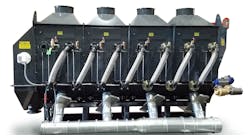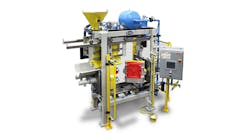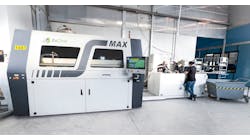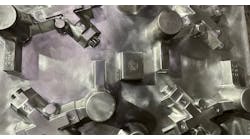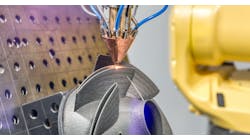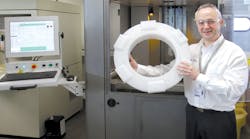Reverse engineering represents another credible application of the various 3D manufacturing technologies now penetrating the metalcasting “space.” For foundries seeking to understand how to apply such technologies to their businesses, or even those seeking to justify the investment, a recent project for Britain’s Castings Technology International (Cti) is instructive.
Cti is manufacturer of specialty cast products that developed, patented, and commercialized the Replicast® process to expand the scale and complexity of steel parts. Replicast uses ceramic shells formed around sacrificial replica patterns, made directly from CAD designs using additive manufacturing or machined from polystyrene, which makes accuracy of each casting exceptionally reliable.
It developed Replicast to address the quality and machinability problems associated with sand-molded steel castings, and to avoid the carbon pick-up from polystyrene patterns in standard lost-foam processes. The goal was to achieve the high standards of integrity, surface finish, and precision of lost-wax casting for larger and heavier castings than could be made with standard lost-wax technology.
In the Replicast process, polystyrene patterns are formed in aluminum dies, and in such a way that a high degree of accuracy is achieved that is consistent over the long term because no wear is inflicted on the dies. This results in weight and machining savings that reduce finished-product costs significantly.
Recently, for example, the process was used to produce a particularly demanding type of casting: impellers for heavy-duty pump systems. Increasing pressure to improve the performance of pumping equipment, and to reduce costly down time for the operators, resulted in a successful application of Replicast for such a critical design and finished part.
Besides producing precision castings, Cti conducts process research to help casting manufacturers to solve problems and improve production. While it supplies high-value manufacturers with low-volume, precision steel, superalloy and titanium castings that would otherwise be difficult to source, it also provides advanced casting expertise, including computer process modeling, design for casting manufacture, casting process development, environmental, laboratory investigation, testing services and materials optimization. These capabilities are in addition to customized technology packages for all alloys and casting processes.
Even more recently, Cti was approached by a multinational manufacturer to help it replace some critical spares after component failures began to impact its production. It took Cti just three weeks to reverse engineer the part using high-strength steel and manufacture 72 precision-engineered castings. Following some customary, and extensive, quality control procedures the first batch was delivered to replenish the plant’s depleted stocks.
“We worked evenings, Saturdays, and Sundays, as appropriate, to mitigate the client’s losses. It exemplifies our ability and willingness to deliver complex castings in a fraction of the lead-time required by traditional foundries when a client hits trouble,” explained Richard Gould, commercial manager at Cti, which is a constituent of the University of Sheffield Advanced Manufacturing Research Centre with Boeing, at Catcliffe, England.
Complexity in fraction of time
Cti worked from a damaged component removed from failed equipment. Research specialists from Cti’s laboratory and testing division used spectroanalysis to identify the material from which the original component had been made, and laser scanning technology to take measurements. These details were fed into a computer-aided design program to create a 3D CAD model.
Cti designers used the 3D CAD model to produce drawings of an undamaged component and process modeling techniques to add a feeding system, creating a pattern for a mold that would fill with molten metal at the optimum rate to make perfect castings.
In an effort to ensure minimal risk and delivery in the shortest possible lead-time, two batches were launched (each with marginally differing shrinkage rates applied) down each of two different process routes (i.e., four batches in total.)
Data from the CAD drawing was fed into Cti’s additive manufacturing operation, which uses stereolithography to make replica patterns out of epoxy resin or molds out of sand. The resin system incorporates a laser that traces the shape of the component in a bath of resin, becoming solid where the light strikes it, while the additive mold system binds sand together utilizing a highly specialized chemical process.
Then, Cti used Replicast to manufacture two batches of the components. Each epoxy resin replica was dipped into a tank filled with a slurry of ceramic material, to create a shell with the requisite surface finish. (In the case of sand printing, the molten metal is poured directly into the mold.)
Proceeding with the Replicast process, the ceramic shells are fired, removing the epoxy; put into casting boxes, and surrounded with refractory sand. The boxes are shaken on a vibrating table. Air is drawn out of the sand to create a firm support for the shell, before molten metal is poured into it.
Thus, the casting process retains its centrality to producing quality, complex finished parts — and the role of 3D manufacturing in that sequence is to make high-precision parts available on an as-needed basis.




